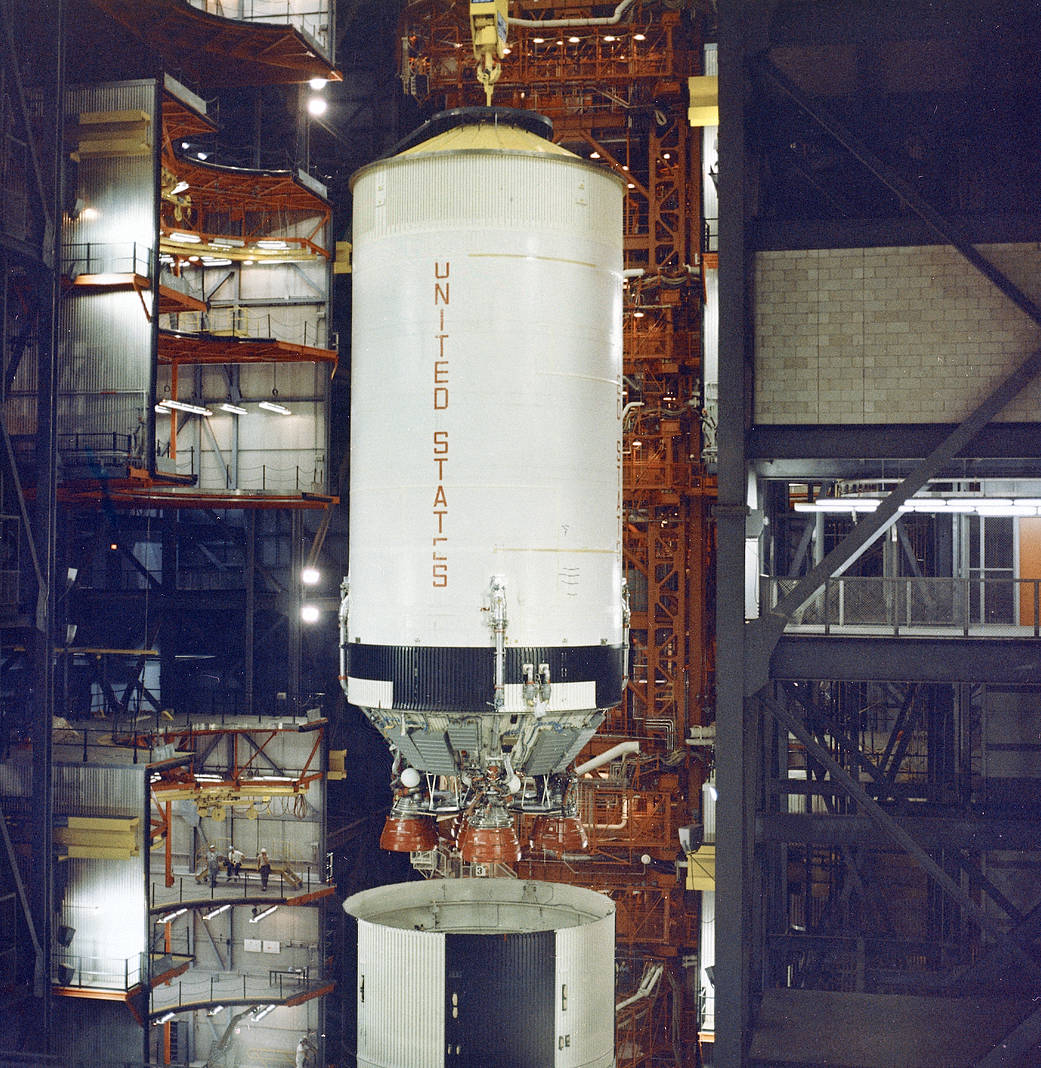
This week in 1966, the first full-duration firing of the S-II flight stage occurred at Mississippi Test Facility — now known as NASA Stennis Space Center — when S-II-T was test-fired for 354.5 seconds. This was the fourth static firing of the S-II-T. Developed by the Space Division of North American Aviation under the direction of NASA’s Marshall Space Flight Center, the S-II, or second, stage of the Saturn V employed five J-2 engines, each capable of producing 225,000 pounds of thrust. Here, the S-II of the Apollo 6 mission is being lowered atop the S-IC, or first, stage of the Saturn V vehicle during final assembly operations in the Vehicle Assembly Building at NASA’s Kennedy Space Center. Now through December 2022, NASA will mark the 50th anniversary of the Apollo Program that landed a dozen astronauts on the Moon between July 1969 and December 1972, and the first U.S. crewed mission – Apollo 8 – that circumnavigated the Moon in December 1968. The NASA History Program is responsible for generating, disseminating and preserving NASA’s remarkable history and providing a comprehensive understanding of the institutional, cultural, social, political, economic, technological and scientific aspects of NASA’s activities in aeronautics and space. For more pictures like this one and to connect to NASA’s history, visit the Marshall History Program’s webpage. (NASA)

























